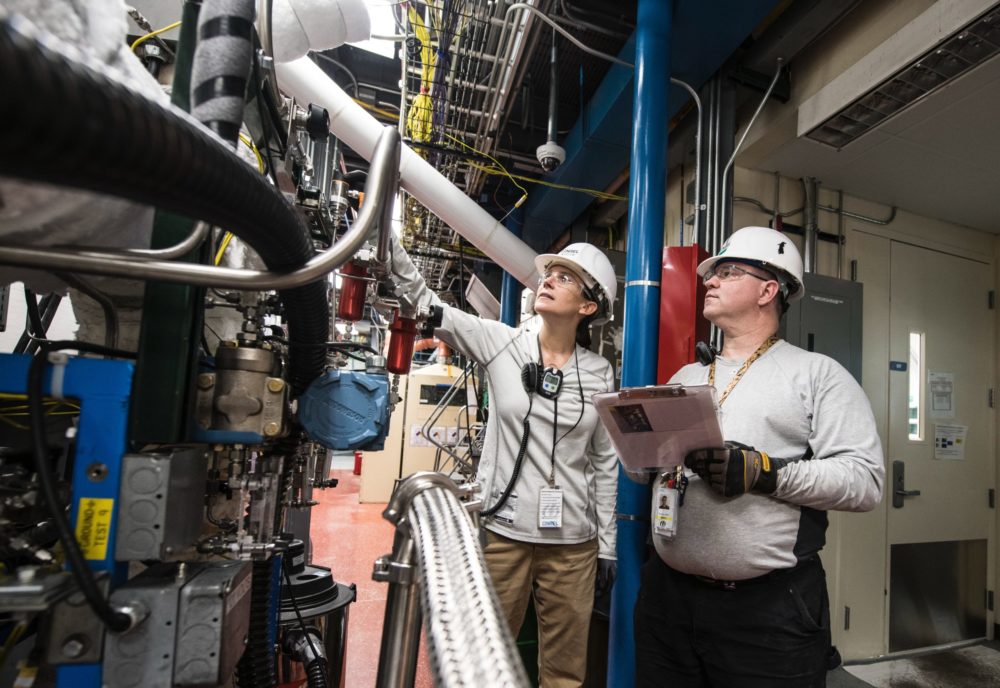How to Improve Safety in Manufacturing

“See something, say something” is no longer an effective way to improve safety in manufacturing, especially when workers aren’t sure who is on the receiving end of their elevated concern.
When was the last time you thought about how to make a meaningful safety improvement in manufacturing? Did you know that employee-driven feedback is often the catalyst in the industry to push innovation and efficiency forward?
In many cases, those changes have their root in feedback from a worker’s vantage point. Maybe a worker on the line mentioned an inefficient way to track employee concerns, or another staff member identified a point in a process that always caused a hiccup and suggested a potential way to improve it.
Feedback is a driver of change, and in manufacturing, continual improvement is something we’re always striving for. Tweaks and improvements are especially important when it comes to employee safety within the manufacturing setting.
Employees can often provide insights into deficits within safety guidelines and suggestions on how to improve them. That’s where offering a continual feedback mechanism is so important.
The Dual Channels of Employee Feedback
It’s important to note that there are two overarching categories of feedback within a manufacturing setting: The first is emergent and must be handled immediately. The second is less urgent and offers valuable insight for making a case to improve.
“In an emergency situation, obviously, employees need to make a more immediate connection with someone to report an issue,” says Max Farrell, CEO and Co-Founder at WorkHound. “But WorkHound is a solution to employee communication. Ultimately, every communication breakdown presents a potential risk at work, so it’s vitally important to offer workers an outlet for their feedback.”
While feedback in any industry plays an important role, it’s an especially necessary component in manufacturing settings, where seemingly small issues can turn into significant problems very quickly.
“I think a lot of manufacturers use ‘see something, say something’ as a universal phrase to encourage employees to have their voices heard,” Farrell says. “But sometimes employees simply don’t know where to go to share their feedback. Or maybe they do and are concerned about repercussions.”
Feedback’s Safety Role in the COVID-19 Pandemic
The timeline of COVID-19’s emergence and impact in the United States alone presented volatility in every industry. During the course of just a few months, the virus spread across the country and created chaos — and a significant burden on the supply chain.
By nature, frontline workers are presented with significant physical and emotional stress on a good day — which means having a sounding board for feedback is even more important during a pandemic.
With a tool like WorkHound, manufacturers can work not only to improve safety but also to prioritize their employees. This includes multiple facets, encompassing both physical safety and emotional health.
“Employees don’t always want to openly share that they’re overwhelmed — they don’t want to look weak,” Farell says. “This can help leaders and other admins know when employees need a break and when they’re at risk of burnout.”
Raising that silent alarm is especially important right now, with changing dynamics in the way that many manufacturing companies are working.
“HR teams are working from home in some cases,” Farrell says. “And even if they’re not, they’re separated from what employees are actually seeing on the floor, as well as the changes and information they need in this evolving climate. WorkHound provides a tool for overcoming that barrier and improving safety all around.”
Ready to put our feedback tool to work for your manufacturing company? Sign up for a free consultation to learn how we can help.
Let's Build Better Workplaces Together
Revolutionize your company culture and your worker retention rates by improving communication and engagement.
Book a Demo

